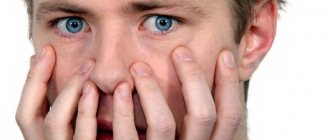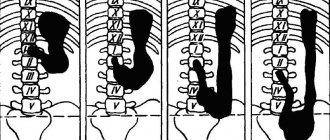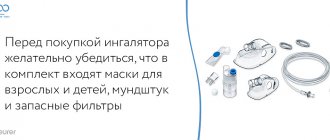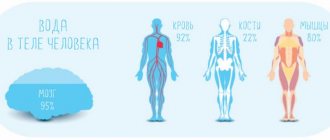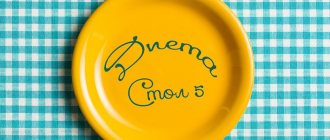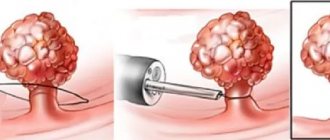Hello friends! Do you know how to stop craving sweets, start eating fatty foods and, finally, lose weight with virtually no food restrictions and no exercise? Read on, and I will tell you how a keto diet (menu for a week) for women will help you lose weight and discourage the desire to devour candy and cookies. Yes it is possible!
My blog is a place where I constantly tell you secrets for losing weight. You've hopefully noticed that I adhere to three basic principles: don't hurt yourself, don't lose the pleasure of eating well, and don't torture yourself too much.
Today's post will also be no exception. I will talk about a nutritional system that contains in its diet a large number of permitted foods, and most importantly tasty ones. The results will also not keep you waiting.
However, I always start each of my posts about diet with a warning - be sure to consult your doctor before starting. Because keto nutrition has serious contraindications and is not suitable for all people. But more on that below.
Detailed descriptions of products for the keto diet
Meat
Meat
While unprocessed meat is low in carbohydrates and suitable for the keto diet, organic, grass-fed meat may be even healthier. It's worth remembering that the keto diet is a high-fat diet, not a high-protein diet, so you don't need huge amounts of meat. Excess protein (more than your body needs) is converted to glucose, which makes it harder for your body to enter a state of ketosis, so keep your meat portions small. Please note that processed meats (sausages, sausages, canned meats, ham, meatballs) contain a lot of carbohydrates and should be avoided.
Fish and seafood
Fish
Fish and seafood are ideal for a ketogenic diet, especially fatty fish such as salmon. However, avoid breading as it contains carbohydrates. Wild caught fish is best (scientific study).
Eggs
Eggs
Eggs on a keto diet are suitable for consumption in any form - boiled, scrambled, scrambled. Buying organic or pastured eggs may be the healthiest option.
How it works?
We used to think, or rather, we were so often told, that glucose is needed to start metabolism. Where can I get it? Of course, in foods with a lot of carbohydrates - cereals, whole flour, fruits.
Try a more gentle diet, but similar in principle to keto - low carb high fat or lchf diet (high fat low carbohydrate).
However, in this case, the body burns these quick and long-lasting carbohydrates without touching the existing fat at all. It is, as it were, put aside for a “rainy day” and is an emergency reserve, which greatly upsets us.
Receive a book as a gift >
The Ketogenic diet is based on a lack of carbohydrates. As soon as the body realizes that there is not enough fast fuel, it takes on the resources that are already available, that is, our deposits on the sides and hips.
Ketosis sets in - the body takes energy from fats. Sounds like a dream.
Oils and sauces
Don't be afraid to eat fat on a keto diet, most of your calories on a ketogenic diet should come from fat. Most likely, you will get the bulk of your fats from natural sources such as meat, fish, and eggs. However, also use oil in cooking: butter or coconut oil, you can add a lot of olive oil to salads. Sauces containing fat, such as béarnaise or garlic sauce, are allowed. Read our separate extensive article: fats on the keto diet, sauces and oils: what is possible?
Don't be afraid to eat fat on the keto diet (scientific study).
Try a short post or a bold post.
Another way to get into ketosis is to go without food for several hours.
In fact, many people experience mild ketosis between lunch and breakfast.
Children with epilepsy sometimes fast for 24 to 48 hours before starting a ketogenic diet. This is done to get into ketosis quickly so that the attacks can be shortened faster.
Intermittent fasting, a dietary approach that involves regular short periods of fasting, can also induce ketosis.
Additionally, "fat fasting" is another ketone stimulation approach that mimics the effects of fasting.
This involves consuming about 1,000 calories per day, 85-90% of which come from fat. This combination of low-calorie and very high-fat intake can help you achieve ketosis quickly.
A study conducted in 1965 showed significant fat loss in overweight patients following obesity. However, other researchers note that these results have been greatly exaggerated.
Because fat fasting is so low in protein and calories, it should be maintained for a maximum of three to five days to prevent excessive muscle loss. It can also be difficult to stick to for more than a couple of days.
Vegetables
Vegetables are an excellent and tasty fat option to eat on a ketogenic diet, and they can be eaten fresh or frozen. Choose vegetables that grow above the ground (learn why here), especially leafy and green foods: cauliflower, cabbage, avocado, broccoli and zucchini. You can fry vegetables in butter, then add them to a salad dressed with olive oil. Vegetables add more variety, flavor, and color to your keto meals. Many people start eating more vegetables after being introduced to the keto diet, as vegetables replace pasta, rice and potatoes.
Menu for proper entry into ketosis - 3 examples
The undoubted advantage of the keto diet is also the variety of recipes. Every day you can prepare new delicious breakfasts
,
lunches
and
dinners
. You don't have to replace your favorite dishes, just adapt them for keto.
Nutrition to enter ketosis – 1
Breakfast: Crackers
with almond milk
Dinner
: Chicken legs with
keto puree
Dinner
:
Chinese Pork
Snacks
Nutrition to enter ketosis – 2
Breakfast: Bran porridge
Dinner
:
Sweet Chicken Wings
Dinner
:
Cucumber and Bacon Rolls
Snacks
Nutrition to enter ketosis – 3
Breakfast: Omelette
with bacon
Dinner
:
Nut-crusted cod
Dinner
:
Meat pie
Snacks
Dairy
Butter and high-fat cheese are good for the keto diet, and high-fat yogurts can be consumed in moderation. Heavy cream is good for cooking. Avoid drinking milk, as it contains a lot of milk sugar (one glass of milk = 15 grams of carbohydrates), but you can add a small portion of milk to your coffee. Be sure to avoid caffe lattes (18 grams of carbohydrates). Also avoid low-fat yogurts because they often contain a lot of added sugar. Keep in mind that regularly snacking on cheese when you're not hungry is a common mistake that can slow down your weight loss process.
Diet duration
The duration of the diet depends on the goals you have set for yourself:
- 5 days is the minimum period, you can lose 3-4 kg;
- 14 days - loses from 4 to 8 kg;
- 3 months is the optimal period of the diet, it takes from 10 to 15 kg.
Experts do not recommend staying on a ketone diet for a long time. It should be followed according to the following scheme:
- first time - no longer than 7 days;
- the second time - no longer than 14 days;
- the third time - until the specified goal is achieved, but not more than 3 months.
After each course you need to take a month break. Get out of the diet gradually, including 30 grams of carbohydrates daily.
Nuts
Nuts can be consumed in moderation on a keto diet, but be careful when using nuts as a snack as it is very easy to eat far more than you need to satisfy. Also keep in mind that cashews are relatively high in carbohydrates, with pecans, walnuts, coconut, almonds, hazelnuts, and macadamia nuts being the best options. Read our separate extensive article: nuts on a keto diet: which ones can you eat?
Pros and cons of the diet
A large number of side effects and contraindications do not allow us to recommend the keta diet to everyone who wants to lose weight.
And there are also social and psychological consequences: how many can live without sweets and bread for six months? What will the rest of the family eat? And how not to give in to temptation at the holiday table? And most importantly, how to stay slim afterwards? After all, you can’t stay on a low-carb diet your whole life.
These questions push many people to look for alternative ways to lose weight. And the keto diet remains a method for selected and professional athletes.
The undeniable advantages of dietary nutrition include:
- increase in muscle mass;
- glucose control;
- increasing intellectual performance;
- relief of epilepsy;
- improving the condition of the skin;
- inhibition of the development of oncological processes;
- improvement in Parkinson's disease, Alzheimer's disease and other pathologies of the nervous system.
However, the keto diet has many more disadvantages:
- flu-like symptoms during the adaptation period;
- frequent urination (dehydration, leaching of magnesium, sodium, electrolytes from the body);
- constipation, impaired intestinal motility (due to lack of vegetables and fruits);
- loss of strength (observed during adaptation);
- deficiency of multivitamins (after 3–5 months of nutrition, hair begins to fall out);
- heartburn;
- skin rashes.
Berries
On a keto diet, low fructose berries are okay to eat in moderation. Berries with whipped cream are a popular keto dessert. Read our separate extensive article: fruits and berries on keto: which ones are possible?
Increased Energy
When losing weight, most people suffer from apathy, depression, and loss of strength. This is due to low blood glucose levels. This will not happen with the keto approach. Simple recipes provide a long-lasting feeling of fullness, with a fairly high level of energy.
To increase energy, it is better to combine nutrition with physical activity. During training, vital hormones are released, which, in combination with a low-carbohydrate diet, will give incredible results.
Spices and seasonings
Spices
You can always: apple cider vinegar, Ceylon cinnamon, cilantro, cocoa powder, coconut aminos (if not intolerant), ginger, mustard, oregano, parsley, rosemary, sea salt, thyme, turmeric, vanilla pods.
Beware of added sugars and high glycemic sweeteners found in commercial spice or seasoning blends. Carefully study the composition of such seasonings; they should not contain additives such as sugar, milk powder, potato or corn starch, or monosodium glutamate. By the way, you can just as easily prepare any ready-made seasoning mixture yourself. Table salt often contains fillers and anti-caking agents that are not listed on the package, so it is better to choose sea or Himalayan pink salt.
Stages of adaptation of the body to ketosis
- Stage 1.
The entire volume of carbohydrates should be consumed in the first half of the day. In this case, the energy from them will be completely recycled. Then glycogen will begin to connect, which will produce its own glucose.
- Stage 2.
Carbohydrate foods are kept to a minimum. Now glycogen from the liver and muscles is entirely responsible for energy production. After another 2-3 days, the body will begin to look for alternative sources of energy.
- Stage 3.
After three days, all glycogen reserves will be depleted. The body has 2 sources left from which it can get energy - proteins and fats. Fats will begin to burn, but full-fledged ketosis has not yet occurred at the third stage. The body begins to process proteins that come with food into glucose. If a person does not receive enough protein products, the body will burn muscle, which is very bad. Therefore, the keto diet involves doubling the proteins in the menu. That is, instead of 2 g of protein, for each kilogram of weight you will now need to eat 4 g.
- Stage 4.
After a week, the body understands that carbohydrates will not be supplied with food. Then he begins to draw it from fat deposits. Only from this moment can we consider that ketosis is fully started.
Beverages
- Water is the most basic drink on a keto diet; you can drink regular boiled or sparkling water. You can add natural flavors to your water drink, such as chopped cucumbers, lemons, or limes. If you're experiencing headaches or keto flu symptoms, add a little salt to your water.
- Coffee - no added sugar, you can add a small amount of milk or cream. To get extra energy from fats, add butter or coconut oil to your coffee, check out our Bronecoffee recipe. Please note: If your weight loss slows down, reduce the amount of cream and butter in your coffee.
- Tea is a good drink on a keto diet, whether it's black, green, mint or herbal tea, feel free to drink a variety of teas. Sugar should not be added to tea.
- Bone Broth – Hearty, nutrient-dense, and easy to make, homemade bone broth is a great drink to drink on a ketogenic diet. Add a little butter to the broth for extra energy.
Read our separate extensive article: Keto Drinks: Best to Worst
What is the benefit of such nutrition?
Experts note the following advantages of keto nutrition:
- the keto diet brings good results in a short period of time;
- The weekly menu for women and men is practically the same, the only difference is the portion size. This is a good option for married couples - no longer does everyone need to cook separately;
- the keto diet menu is quite varied, which reduces the likelihood of failures;
- The keto diet increases energy levels and improves brain activity;
- With the keto diet, blood sugar levels are stabilized.
Let us examine in more detail the main advantages of this type of nutrition.
For special occasions
You decide for yourself whether you should consume the following products or not. By consuming the following foods, your weight loss may slow down slightly.
Alcohol: preferably dry wine (dry red or white wine), champagne, whiskey, brandy, vodka and sugar-free cocktails. Read our separate extensive article: What kind of alcohol can you eat on a keto diet?
Dark chocolate : A small piece of dark chocolate with a cocoa content higher than 70% will definitely not hurt you. Try making a dish with a small portion of 85% chocolate grated on top of the berries with whipped cream. Read our separate extensive article: Keto snacks and snacks: what is possible?
List of prohibited foods on the ketogenic diet
Sugar is strictly prohibited on the keto diet. Avoid sugary sodas (Coca-Cola, Pepsi, Sprite, Fanta), fruit juices, sports drinks and vitamin water. Avoid sweets: candy, cakes, cookies, candy bars, donuts, ice cream and breakfast cereals. Read food labels for sugar content, especially in sauces, condiments and drinks. Honey and all kinds of syrups are also sugars. Ideally, try to avoid or limit artificial sweeteners
Starch. On a keto diet, you cannot eat foods containing starch - bread, pasta, rice, potatoes, chips, porridge, muesli, and so on. Avoid whole grains. Vegetable legumes in the form of grains or beans (peas, beans, soybeans, lentils) and in the form of green pods (green beans, peas) contain a lot of carbohydrates. Small quantities of certain root vegetables (other than potatoes) may be acceptable.
Beer is “liquid bread”; beer contains a lot of carbohydrates that are quickly absorbed by the body and is absolutely not suitable for the keto diet.
Fruits contain a lot of sugar and are not suitable for consumption on a ketogenic diet; treat fruits as negatively as you treat candy. Find out more about fruits in a separate article.
Margarine is a commercially produced imitation butter that is very high in omega-6 fat. We advise you to avoid margarine on a keto diet; it has no obvious health benefits. In addition, many people believe that margarine tastes worse than butter. High omega-6 content may cause the development of asthma, allergies, and inflammatory diseases (scientific study).
Keto diet: fashionable? Yes. Need to? Question
The keto diet is a low-carbohydrate, high-fat diet. It is credited with magical properties: they say that it will not only help you lose weight forever, but will also rebuild your metabolism and get rid of health problems. What really? Olya Tretyakova understands.
The popularity of the keto diet is off the charts: for this query, Google displays almost half a million links with tips, meal plans and a list of allowed foods.
Gwyneth Paltrow and Halle Berry are on the keto diet. It is also known that it was this food system that Alicia Vikander adhered to when preparing for her role in the film Tomb Raider: Lara Croft. But is it worth getting on it for a person who does not plan to surprise Hollywood and rob tombs? For example, someone like me?
Experts helped me understand this issue:
- Ksenia Selezneva, Ph.D., Head of Dietetics, EMC Clinic.
- Irina Urnova, beauty director of Esquire magazine, nutrition consultant.
- Yuri Poteshkin, PhD, medical endocrinologist.
- Alisa Fuzeeva, nutritionist.
Research links from the article “The Ketogenic Diet: Probably Not for You.”
What is the keto diet?
There are several types of low-carb nutrition - from liberal LCHF (low-carbohydrate high-fat) to extreme carnivore - "carnivore nutrition", in which the diet contains only animal products.
The keto diet falls roughly in the middle between these extremes. This is a low-carb, very high-fat diet. According to various estimates, fats should occupy up to 70-80% of the diet. For this, we are promised an increase in life expectancy by 10 years, increased energy and productivity, and healing from cancer.
How does keto work?
We typically get energy from glycogen, which is obtained from carbohydrates and stored in the muscles and liver. When you switch to a high-fat diet, your metabolism changes. Instead of glucose, the body begins to consume ketones as an energy source, molecules that the liver produces in the absence of glycogen. That is, in fact, in the absence of carbohydrates, our body will receive energy from an alternative source - fats and proteins.
To switch to this alternative source of nutrition, you need to rid the body of glycogen residues and force it into a state of ketosis. This is exactly what a diet high in fat, moderate in protein and minimal in carbohydrates should help with. Different sources determine the dose of carbohydrates to be 20-30 g per day. This corresponds to approximately one and a half slices of bread or 50 g of buckwheat. The rest of the diet is fatty meat, fish, butter, nuts and eggs.
In the 20s of the 20th century, the keto diet was used for children with epilepsy. However, almost a hundred years have passed since then, and today, according to a report published in the journal Epilepsy, the keto diet is one of the most rarely used methods of combating this disease.
A new round of popularity for keto came from studying the nutrition of the peoples of the Far North. “Their diet consists almost entirely of meat and fat,” says Irina Urnova. “Interest in this diet grew when it became clear that these people have extremely low rates of cardiovascular disease, degenerative brain diseases (dementia, Alzheimer’s, Parkinson’s) and type 2 diabetes.”
But to what extent this depends on nutrition, and where is the cause and where is the effect, it is impossible to say for sure. There are no scientific studies to confirm this connection.
How to enter the ketogenic diet?
Switching to keto is not exactly a pleasant procedure. In the process of giving up carbohydrates, many experience a phenomenon called “keto flu”. “This condition is similar to a cold,” says Irina Urnova, “there are aches, drowsiness, a sore throat, and problems with stool. Most often, symptoms go away within 1-3 days.”
...Or last much longer. “It happens that adaptation lasts from 1 to 6 months, depending on what nutrition system a person followed before and to what extent he is overweight,” says Alisa Fuzeeva. Often, unpleasant symptoms are associated not so much with the transition to a different type of diet itself, but with one of its consequences - the death of candida in the body: “As it breaks down, it releases toxic substances, and this makes the person feel unwell.”
In any case, according to Fuzeeva, you need to enter ketosis wisely: measure ketones in your urine once a day and take vitamins and minerals.
Urnova also agrees about vitamins: “When switching to a keto diet, a person initially loses a lot of water, which is retained, among other things, by glycogen in the muscles. Water takes with it minerals - electrolytes: magnesium, potassium, zinc and sodium. Therefore, their deficiency should be replenished.”
Contraindications for the keto diet
“It is absolutely not suitable for diseases of the thyroid gland and for those who adore carbohydrates,” Fuzeeva lists. “And also for those who expect quick results, because this is not always possible.”
“Also, those who have acute problems with the kidneys and liver, pancreatitis, liver dysfunction, porphyria, type 1 diabetes should not try it on their own,” continues Urnova’s list.
Keto diet menu
It will also be difficult for those who, in principle, love to eat. The list of permitted products is small, the variety of proteins is generally very limited by their quantity, and the daily protein intake should not exceed 20%. But not everyone wants to eat exclusively fat.
Harmful? Healthy? Or is it still harmful?
There are conflicting opinions on this matter. Supporters of evidence-based medicine most often speak out against it. According to Yuri Poteshkin, for some, the keto diet can be deadly: “People with diabetes may develop ketoacidosis when switching to this type of diet instead of ketosis. This is a condition that develops when there is a deficiency of insulin. In this case, you can die within 24 hours. The person loses consciousness, then resuscitation. And only if someone finds the victim in time and realizes that he needs help. The fact is that with ketoacidosis, a person emits the smell of acetone, similar to that which appears after alcohol abuse. It’s easy for outsiders to confuse one with the other, so the attitude towards a person lying unconscious on the street may be appropriate.”
But, we emphasize, this is only true for people with diabetes. An ordinary healthy person cannot develop ketoacidosis, says Poteshkin.
“Yes, ketoacidosis can affect people with certain diseases - for example, type 1 diabetics, whose body cannot cope with large amounts of ketones,” agrees Irina Urnova. “However, insulin-dependent people are people with a serious and sometimes congenital disease. They shouldn't eat high-carbohydrate foods either. On this basis alone, one cannot conclude that the keto diet is dangerous for everyone else.”
In general, there is no scientific evidence that the ketogenic diet is harmful to a healthy person. (Unless, of course, you count digestive problems: for some, this diet causes constipation, and for others, diarrhea.)
But there is no evidence that it is useful.
Perhaps because, as a way of life, she is still very young. “The ketogenic diet has spread not so long ago,” says Alisa Fuzeeva, “and it’s difficult to find people who stick to it for a long time.”
“The longest-term keto studies I’ve seen lasted 24 weeks,” adds Yuri Poteshkin. - As for the statements of people who say that they have been sitting on it for 50 years... People say whatever they want! Every day I see those who claim that they don’t eat anything at all - and for some reason they don’t lose weight.”
In addition, there is a difference between a therapeutic keto diet, that is, one that is prescribed for medical reasons, and a regular nutritious one - for healthy people, Urnova assures. The second is milder, does not require extremes and is often combined with a regular low-carb diet: “Many people switch to keto for periods: after 2-3 months, they go back to a more liberal version of low-carbohydrate, high-fat (LCHF) nutrition.” The amount of carbohydrates allowed for LCHF is greater - from 50-70 to 100-120 g per day. But also, of course, not at the expense of sweet rolls, but at the expense of high-quality whole foods - vegetables, fruits, berries, and sometimes some cereals.
Who needs a keto diet anyway?
Research shows that ketosis, without which there is no keto diet, is effective under extreme stress: it prevents oxygen poisoning among deep sea divers and makes ultramarathon runners more resilient.
However, there is again no consensus on this matter. One study found that the keto diet may slightly improve endurance performance (specifically in mountain bikers). And according to another study, it does not improve, but, on the contrary, reduces performance.
Does the keto diet protect against disease? There are also mixed opinions on this matter. There seems to be evidence that it can help treat cancer. However, according to the publication “Medical Oncology”, the keto diet not only helps with this, but can also cause unwanted side effects.
However, ordinary people are not athletes! — they still switch to the keto diet.
For what? According to Irina Urnova, who herself follows a keto diet, “including for the sake of clarity of mind, good health and mood, and restful sleep.” Although, as a health benefit, sometimes it is enough to simply follow a low-carbohydrate, high-fat diet - eat 50-70 g of carbohydrates per day: “Some even with such a diet lose weight and solve certain health problems.”
Dr. Poteshkin believes that this is not worth doing: “As a lifestyle, the keto diet is a dubious decision. The keto diet is used only for medical reasons - that is, for epilepsy, and only under the supervision of a doctor. As a permanent diet, it is not physiological, because constant carbohydrate starvation is unnatural. I understand that keto dieters don't think of not eating carbs as hunger, but for the brain, that's exactly what it is. After all, the brain feeds primarily on carbohydrates. And they should be in the diet."
Will the ketogenic diet help you lose weight?
The keto diet does not promise exact numbers: “in X days you will lose Y kg,” but its adherents assure that as soon as you switch to it, the excess weight will begin to disappear.
If only because people on keto obviously eat less. Many do it only twice a day: morning and evening. During the day they do not have lunch because they do not feel hungry. Fats saturate and take longer to break down, explains Irina Urnova.
Scam or truth?
According to a recent study, all diets in the world work exactly the same: they simply create a calorie deficit. That is, for weight loss it is not so important what exactly you stop eating: carbohydrates, fats, proteins, or simply reduce the amount of food. “But a person is designed in such a way that it is easier for him to believe in a miracle diet, rushing to extremes, than to come to an agreement with himself once and for all and constantly eat rationally,” explains Ksenia Selezneva. – That is why all kinds of diets were, are and will be popular. And each new one will promise lightning-fast weight loss once and for all.”
Have you tried the keto diet? What kind of diets were you on? Which ones helped and which ones were useless?
Eat natural food!
Focus on minimally processed, good quality natural foods! Ideally, the products you buy should not even contain a list of ingredients, or the list should be short.
Industrially unprocessed natural food is what our ancestors have eaten for millions of years, and what the human body has evolved to adapt to. Processed foods, such as refined carbohydrates, increase the rate of absorption and reduce the amount of nutrients in the food. Thus, we get food that is unnatural for our body. And thus, there is a risk of side effects for health.
How to control your protein intake
The keto diet implies strict adherence to specified proportions of nutrients. This is the key to efficiency and high results. Every day you need to count calories, BZHU, keep a food diary. This will allow you to track the results over a month or longer period. The experience of nutritionists shows that keeping a food journal reduces the likelihood of breakdowns and improves results.
Consumption control consists of several stages:
- Find the optimal ratios of proteins, fats, carbohydrates.
- Calculate your daily calorie intake, taking into account your height, weight, age, and level of physical activity.
- Determine protein needs.
- Determine the need for fats.
- Determine your carbohydrate needs.
- For each indicator, it is necessary to calculate the upper and lower levels. This will help you change the menu throughout the day to get the required amount. For example, calculate the norm for the ratio of BZHU 15/80/5 and 20/75/5.
It is recommended to create a menu in advance, two to three days in advance. Eating according to a plan, where each dish is calculated in advance, is much easier. For beginners, a good option would be a ready-made diet with calculations of the main nutrients. This menu satisfies the ratios of nutrients, is balanced, and contains essential vitamins and minerals. The essence of nutrition lies in compliance with the norms.
How low carb is the keto diet?
Keto is a low-carb diet, not a no-carb diet. So how many carbs can you eat in a day? Allowed consumption ranges from zero carbohydrates to 100 grams per day. For maximum weight loss benefits, it is recommended to stay below 20 grams per day . Below are three examples of what a plate of food might look like depending on how many carbs you eat per day.
Type of plate with food depending on the amount of carbohydrates in grams
Additional diet conditions
To enter ketosis and the diet to bring the desired results, follow these important rules :
- drink up to 4 liters of clean water daily;
- avoid snacking;
- Reduce portion size daily;
- eat 5-6 times a day until you feel full;
- do light exercise for 30 minutes every day;
- take vitamins;
- Eat greens daily, which will help cleanse the intestines and prevent the development of constipation;
- Include cold-pressed coconut oil in your daily diet.
How much fat should you eat on a keto diet?
The body has two main sources of energy: carbohydrates and fats. Remove most carbohydrates and the body switches to burning fat for energy. Fat burning comes from your body's fat stores and fat from your food (such as butter or olive oil). How much fat should you eat? It is necessary to focus on your well-being and evaluate the satisfaction of your feeling of hunger. Eating too much fat will slow down your weight loss, but consuming too little fat will leave you feeling tired and hungry. Take as much fat as you need to feel good.
Include coconut oil in your diet
Eating coconut oil can help with ketosis.
It contains fats called medium chain triglycerides (MCTs).
Unlike most fats, MCTs are quickly absorbed and delivered directly to the liver, where they can be immediately used for energy or converted into ketones.
In fact, it has been suggested that consuming coconut oil may be one of the best ways to increase ketone levels in people with Alzheimer's disease and other nervous system disorders.
Although coconut oil contains four types of MCTs, 50% of its fat comes from a type known as lauric acid.
Some research suggests that fat sources with a higher percentage of lauric acid may induce more sustained levels of ketosis. This is because it is metabolized more gradually than other MCTs.
MCTs have been used to induce ketosis in children with epilepsy without carbohydrate restriction as radically as the classic ketogenic diet.
In fact, several studies have shown that a high MCT diet containing 20% of calories from carbohydrates produces effects similar to the classic ketogenic diet, which provides less than 5% of calories from carbohydrates.
When adding coconut oil to your diet, it is recommended to do so slowly to minimize digestive side effects such as stomach cramps or diarrhea.
Start with one teaspoon per day and work up to two to three tablespoons per day for a week. You can find coconut oil at your local grocery store or buy it online.
Other visual keto guides
To learn more about specific topics—like what fruits or nuts you can eat on a ketogenic diet—check out our handy visual guides.
Vegetables
Nuts
Alcohol
Beverages
Fruits and berries
Snacks and appetizers
Oils and sauces


